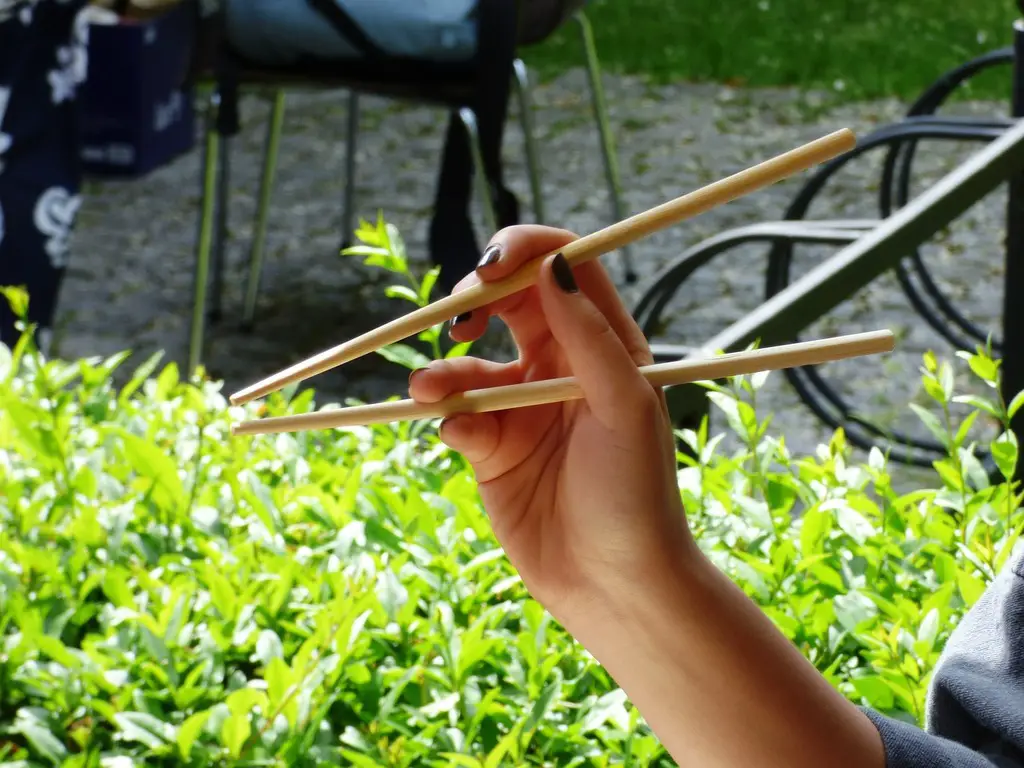
Chopsticks are the eating utensil of choice in many Asian countries and a bit of a novelty for those in Western countries since they’re usually only used when eating Asian cuisine. But a sticky problem has developed for those that rely on the utensil to eat their food.
A bit of history needs to be inserted before the problem can be fully understood. Chopsticks have been around a long time — a very long time. The origin of the chopstick is believed to have occurred about 5,000 years ago in China. Those early forms of the chopstick most likely consisted of small twigs that were used to get food from pots after cooking. The earliest form of chopsticks, as we know them, was discovered in a tomb in China. They were from the Shang dynasty and were dated around 1200 BC. Chopsticks during this time were used mainly for cooking and not necessarily for eating.
The change to the chopstick as an eating utensil happened around 400 BC. Due to fuel resources becoming scarce, food was cut into smaller pieces so it would cook faster, thus conserving fuel. As a result, the knife was needed less and less, and the chopstick came to be used more for eating the bite-sized pieces of food.
The loss of the use of knives also coincided with the non-violent teachings of Confucius and the idea that knives weren’t to be at the table. This was because they could remind the eater of the knife’s use at the slaughterhouse. These beliefs helped chopsticks become ingrained as an eating utensil in the culture of the time. The use of chopsticks spread to other areas by the time 500 AD rolled around, and their use became firmly implanted in Vietnam, Korea, and Japan.
The term in Chinese for chopsticks is kuaizi, which means essentially “quick bamboo,” and etiquette in using the chopstick varies by country and region. For example, the Chinese view it as impolite to spear food with the chopstick, and the Japanese view it as proper etiquette to always use a chopstick rest (a block where the ends of the chopstick can sit) when not eating. These are just a couple of examples.
The materials chopsticks are made of vary and can include plastic, wood, metal, bone, jade, ivory, or porcelain. And herein lies the problem chopsticks are having. They are almost exclusively being made from wood. You wouldn’t think that chopsticks would require much in the way of production since they are small and thin and don’t use much material, but the Chinese are having a definite problem because of their ancient and cultural use of chopsticks.
China uses disposable chopsticks, and each year 20 million trees have to be used to produce 80 billion chopsticks. That’s about 4,000 chopsticks per tree. The forest bureau of the government of China had estimated that the country used 57 billion chopsticks per year, but a forestry group had its use at the higher number. China even exports 15 billion pairs of disposable chopsticks to Japan and South Korea every year.
This isn’t the first time China has had to examine the chopsticks issue. They began taxing them 5% in 2006 to slow the use of disposal chopsticks because of how many trees were being cut down. This amount of forest loss was leading to deforestation and forest quality that was below standards in comparison to others around the world.
Activists have been trying to change the habits of people since some of the deforestation has led to landslides and accidents, things that have been quietly censored on the Chinese web, but the problem hasn’t changed. Only an estimated 3.34% of the country’s forests remain viable. China has become the world’s largest importer of wood for many reasons in addition to the demand for chopsticks, and demand for timber has only increased.
So what is the answer to the problem chopsticks are having in China? Activists and advocates of sustainable forestry say the same thing, bring a reusable set of chopsticks to eat. But, unfortunately, that has been easier said than done at the moment.
Sources: Smithsonian, History, Wikipedia, Time, Washington Post, The Diplomat, China Daily, EIA

